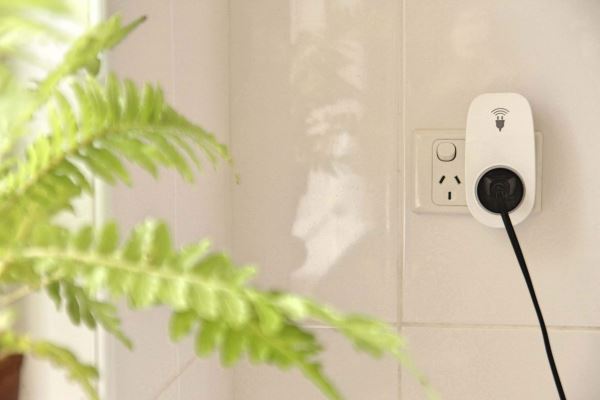An international research team, led by Monash University, has developed a revolutionary triboelectric-based disc that can control smart devices and enhance home security.
The device, activated by the swipe of a finger, can handle eight smart devices and contains a six-digit blind password authentication system.
Completely self-powered, the device can harvest and store energy from light sources.
The researchers say the self-powered triboelectric-based disc, could be the death-knell for traditional electrical switches and house keys in the post-pandemic, environmentally sustainable world.
Researchers at Monash University and the National University of Singapore (NUS) have spent the better part of two years working on a solution for human-machine interfaces to control home systems and appliances in response to the rapid growth in smart home technology.
The research team has developed a solar-powered disc that has the capacity to handle eight smart home devices, such as TVs, radios and music players, using Bluetooth.
Their device, activated by the swipe of a finger, can also protect home and business owners against would be thieves through a six-digit blind password authentication system. There are more than 262,000 password combinations based on this configuration.
And weighing just 47g, the compact size of the device enables it to be attached to walls, windows, tables and desks for wirelessly controlling applications.
Rechargeable battery
It is also completely self-powered. The solar cell can harvest energy from natural and artificial light sources, such as sunlights, downlights, or table lamps. The energy is then stored in a rechargeable battery to power the electronic circuit.
“Smart home technology has been extensively developed and is capturing more attention from researchers. However, digital devices used for smart home connectivity have little or no built-in security, which makes them vulnerable to cyber-attack,” Associate Professor Mehmet Yuce, lead researcher in Electrical and Computer Systems Engineering at Monash University, said.
“The COVID-19 pandemic has transformed our work and home lives forever. A user-friendly interface system to control our home systems and appliances, and to keep our homes secure, has never been more critical.
“The technology can also be useful to secure abandoned offices and work stations by enabling an extra layer of security because of this pandemic.”
The key to the device’s success is its ‘sliding’ triboelectric nanogenerator (TENG)-based control interface, which generates 3-bit binary-reflected Gray-code. This is developed by integrating copper electrodes, polytetrafluoroethylene (PTFE) film, a photovoltaic cell, and electronic signal processing circuits.
The Gray-code houses eight unique sensing patterns with each pattern used to control one individual smart device. To switch on an appliance, users move their finger across a sensing pattern in one direction. Users perform the same motion in the opposite direction to switch off the same appliance.
Assuming the device operates every 20 minutes, and each operation takes 10 seconds to perform, the average power consumption of the device is about 0.5mW – less than a standard doorbell.
The system can wake from its sleep mode by tapping on the sensor. It can also store this kinetic energy for future use.
Monash PhD researcher, Chunkai Qiu, says this TENG-based device can be an excellent replacement for traditional mechanical switches and traditional home or office security measures.Monash PhD researcher, Chunkai Qiu, says this TENG-based device ca
Exceptional advantages over traditional switches
“The TENG-based control disc exhibits exceptional advantages over mechanical and current digital switches, such as being self-powered, portable, multifunctional, reliable, and high scalability and safe,” Mr Qiu said.
 “Compared with standard numeric keypads, the TENG device has no obvious digits on the interface. Therefore, it is difficult for another person to see the password you have entered.
“Compared with standard numeric keypads, the TENG device has no obvious digits on the interface. Therefore, it is difficult for another person to see the password you have entered.
“A good example is, for instance, when using ATM or shopping keypads, digits can be copied from observation or by using a camera. From our proposed sliding based disc concept, it will be very difficult to identify the codes as the ‘numbers’ are hidden within the disc.”
Up to 50 billion internet-connected devices are expected to be in use across the world by the end of 2020, with this figure anticipated to reach 100 billion by 2030.
Developing such secure devices to connect and control our daily electronics devices will enable smarter and safer living environments and processes.
The research titled: ‘Self-powered control interface based on Gray code with hybrid triboelectric and photovoltaics energy harvesting for IoT smart home and access control applications’ was led by Associate Professor Mehmet Yuce, with support from Chunkai Qiu and Fan Wu (Monash University), and Chengkuo Lee (National University of Singapore).


